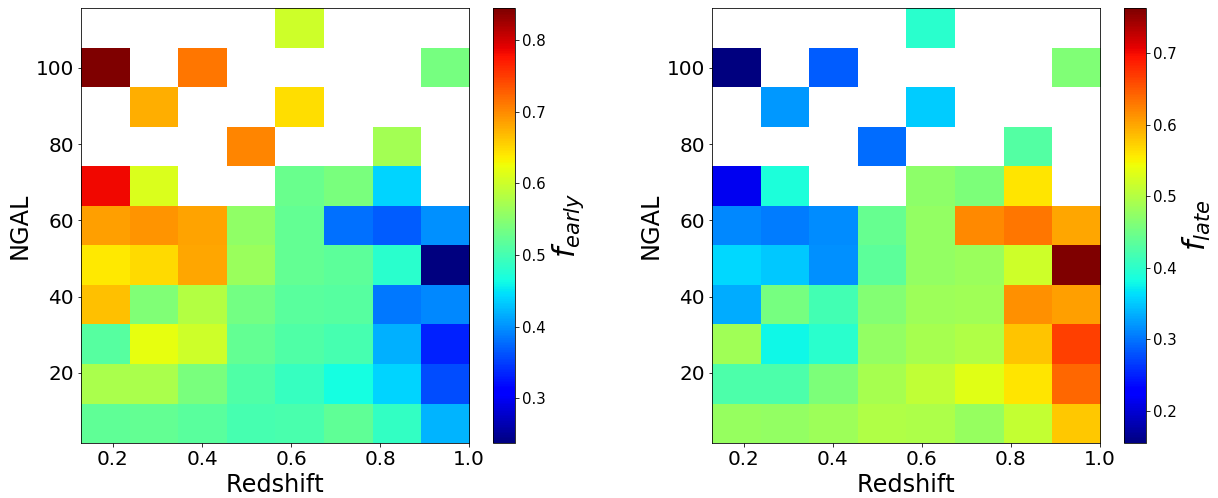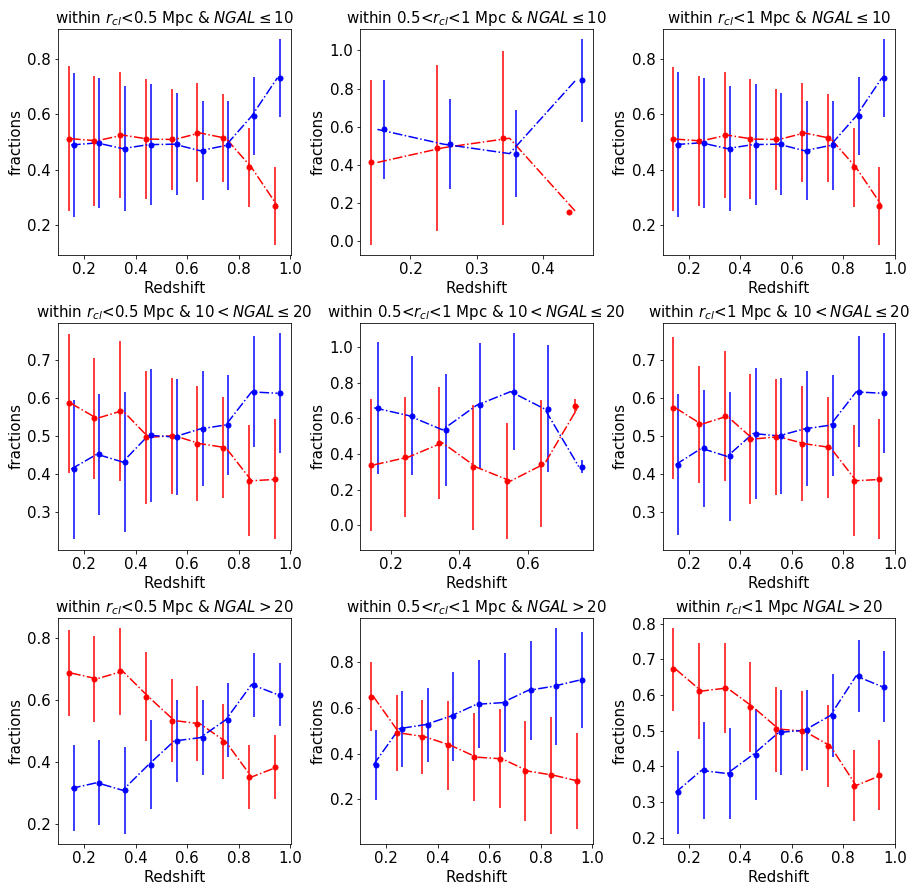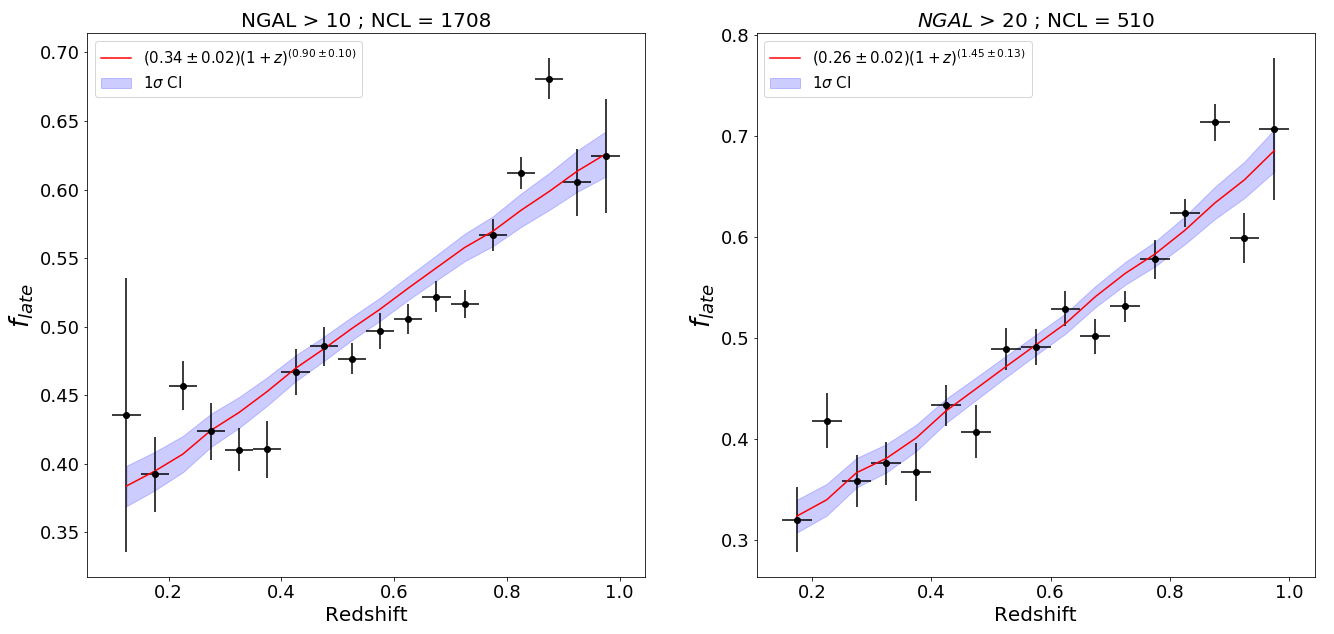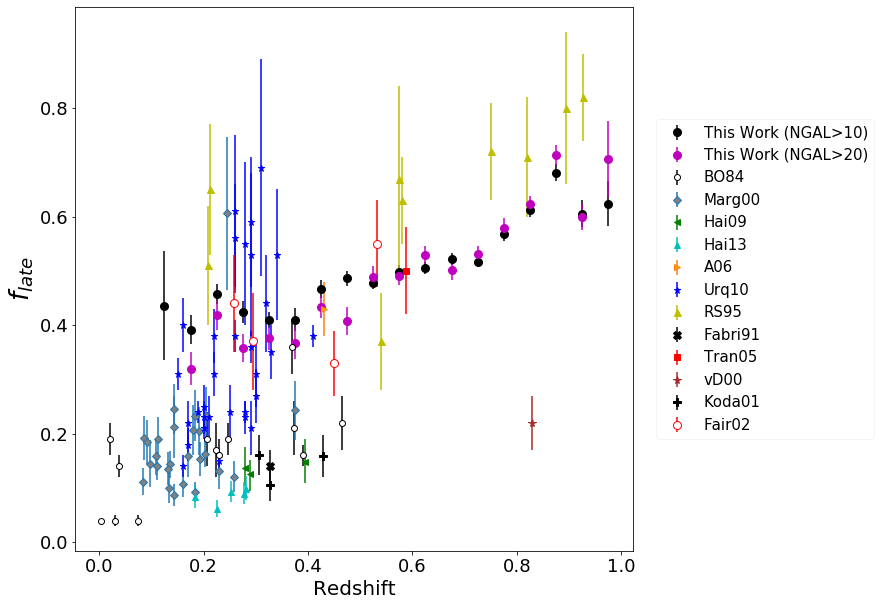Galaxy clusters are the largest known gravitationally bound structures in the universe. They include hundreds, and even thousands of galaxies. Besides their cosmological importance (Voit, 2005; Allen, Evrard, Mantz, 2011) they are ideal laboratories for studying galaxy evolution. Galaxies can be divided into different categories such as red/blue, early/late-type based on their colors and/or morphological features. Early-type galaxies usually are redder than late-type galaxies which implies that star formation is not ongoing in these galaxies. Thus, they are mostly called as "red-and-dead" galaxies. However, there are also passive late-type galaxies (Masters, K.L., 2010; Mahajan, S., 2020) which have undergone severe ram-pressure stripping in dense environments (Boselli et al., 2016). A regular galaxy cluster is dominated by mainly early-type galaxies with a ratio of (E+S0)/(Sp) ~ 4-5 (Bahcall, 1999). However, Butcher and Oemler (1978, 1984) showed that clusters at intermediate redshift have higher blue (late-type) galaxy fraction with respect to clusters at lower redshifts (i.e. Butcher - Oemler effect).
We use a sample of 3284 galaxy clusters from the CFHTLS-W1 region that detected by the WaZP cluster-finder algorithm (Benoist, C., 2019) which is also described in Dietrich et al. (2014). Our cluster catalog ranges between 0.1 < z < 1. WaZP finds clusters based on their position in the sky and photometric redshifts (e.g. 2+1 dimensions). Galaxy densities are characterized with wavelets and then cylinder which contains the structure is analyzed in different redshift slices. Final detections are ranked by their signal-to-noise ratio. In this study, we keep clusters with a S / N > 3.
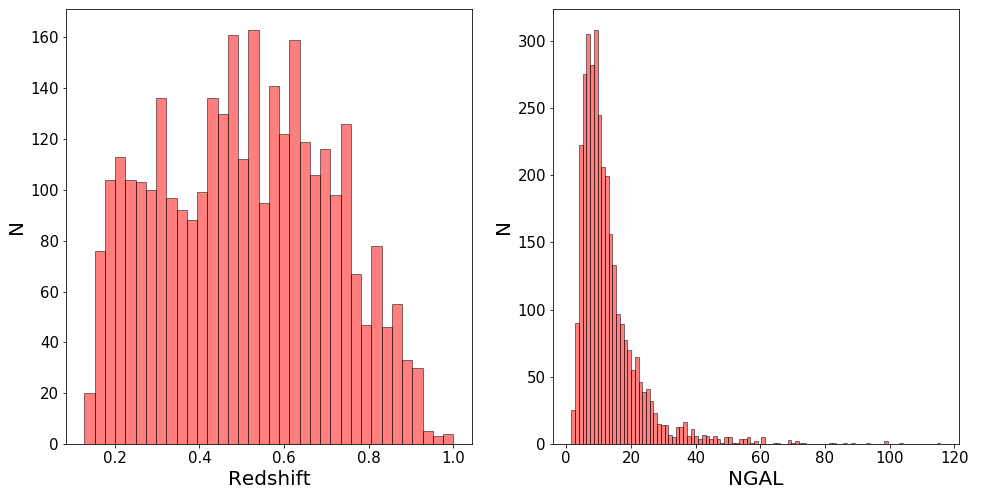
Figure 1: On the left: Redshift distribution of the 3284 clusters. On the right: Richness distribution of the same sample.


